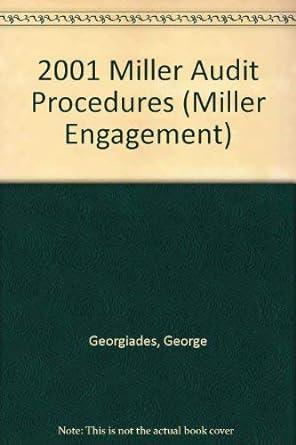Question
1. Describe the internal control problem(s) presented by the situation and explain the potential risk of fraud to which the company is exposed. 2. Evaluates
1. Describe the internal control problem(s) presented by the situation and explain the potential risk of fraud to which the company is exposed.
2. Evaluates the control environment of the organization in the case in terms of the five components of internal control according to COSO 2013: The Control Environment, Risk Assessment and Management, Control Activities, Outsourcing or Monitoring. A. Identify the following: which of the components is affected by the situation B. which of the principles of that component is not being met and needs to be improved?
3. Recommends the preventive, detective and corrective control procedures (at least one of each) to be used to mitigate the risks found.
4. Conclude your paper by explaining how a company can develop a fraud risk management program that is effective and efficient. Base your answer on the components and principles of COSO.
5. Answer the questions at the end of the case.
THE CASES Case 1: Control Environment and Control Activities: The Importance of Hiring Trustworthy Employees
Joe and Mary Gray started their multimillion-dollar home electronics and car audio store chain in Texas in the late 1970s. By mid-1983, their company had grown to 10 stores in 3 states with 500 employees and gross sales of $30 million. The decline of the oil industry in the mid- 1980s led to the company losing almost half of their employees. Additionally, as people moved to more economically viable states, employee turnover continued to increase. During this time, the Grays needed to fill a recently vacated Controller position in their main office. The position was crucial and required a person who was highly motivated and knowledgeable of operations. After interviewing several candidates, they decided to give Jeff Smith the position.
Jeff was nothing like the previous Controller. He was quickly labeled a maverick and was completing tasks that had been languishing for months. Many of the employees noticed Jeff in the office working early in the morning, late at night, and on weekends. On many occasions, Jeffstayed at the office all night and through the next day. He was eager to fill in for people away from the office due to illness, vacation, or business travel. He was improving the efficiency of the office and the Grays were elated at his performance. Within six months of Jeffs arrival, the Grays expanded the Controller duties to include many office operations, and transferred these responsibilities to Jeff. Jeffs charismatic personality and work ethic motivated many in the office to improve their work habits and efforts. The general consensus was that Jeff was an inspired choice for the position and had brought about a complete renewal of the business.
Approximately one year after Jeff was hired, Joe Gray noticed some anomalies after completing the physical inventories and year-end closing of the books. He met with Jeff on numerous occasions to try to resolve the discrepancies, but to no avail. Jeff and Joe worked on identifying the anomalies for about a month, meeting at the main office one Sunday afternoon to continue their search. Only Jeff and Joe were in the office that day. They took advantage of Joes extra long meeting table to lay out all of the ledgers and journals on the table in preparation for their search. After several hours, Joe began to make headway for the first time that afternoon. Jeff excused himself to take a smoking break while Joe continued to close in on the problem. Twenty minutes went by and Joe noticed that Jeff had not yet returned. He waited a few minutes and then went to see where Jeff had gone. Not finding him anywhere in the building, Joe checked outsideJeffs car was gone. Joe tried to call Jeffs house later that day, but there was no answer. The following day, Jeff didnt show up for work. Joe tried to contact him again at home, but he had moved leaving no forwarding address.
As it turned out, Jeff had a long history of embezzling from companiespolice and federal agencies had been looking for him for some time. Some of the ways Jeff was able to steal over $2 million included:
Printing checks and making the necessary reversing entries and using backup files to cover his tracks.
Setting himself up as a vendor with a P.O. Box address, with checks mailed to that address every few weeks. The amounts on the checks were small, so they did not require a second signature.
Jeff handled the cash collections, disbursements, and account reconciliations.
Jeff was able to divert some of the checks received as payments on invoices by using the companys check endorsement stamp, signing the checks over to himself, and depositing them in his personal account.
When Joe came too close to the truth that Sunday afternoon, Jeff realized he was caught and left town. The authorities were contacted, but Jeff got away one more time by befriending everyone, having exemplary performance for the time he was with the company, and gaining everyones trusthe was the perfect employee.
Questions
1. What were some of the factors that contributed to this situation?
2. What internal controls could have been in-place to prevent this from happening?
Step by Step Solution
There are 3 Steps involved in it
Step: 1

Get Instant Access to Expert-Tailored Solutions
See step-by-step solutions with expert insights and AI powered tools for academic success
Step: 2

Step: 3

Ace Your Homework with AI
Get the answers you need in no time with our AI-driven, step-by-step assistance
Get Started


